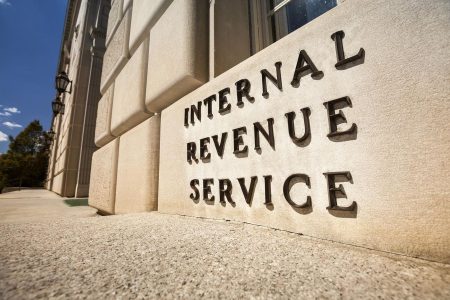The IRS recently surprised tax experts by issuing a new version of its stock compensation auditing guide, which had not been updated since 2015. Developed as an internal manual for IRS employees, it also offers businesses a helpful window into what IRS agents examine in audits related to all types of equity compensation.
Depending on what IRS examiners find, an audit of a company can lead to individual audits, and maybe even amended personal tax returns, for its executives and employees. It’s a heads-up on stock options, restricted stock, restricted stock units (RSUs), stock appreciation rights (SARs), phantom stock, and employee stock purchase plans (ESPPs) for anyone who has these benefits or advises clients with them. Professionals and taxpayers alike should review the guide to avoid pitfalls and tax situations that could trigger a dreaded IRS audit—the worst of which has been vividly described by tax attorneys as “an autopsy without the benefit of death.”
What IRS Agents Inspect With Stock Options And ESPPs
The IRS manual is called the Equity (Stock) – Based Compensation Audit Technique Guide. It gives IRS examiners a roadmap for audit scrutiny into when income should have been recognized, reported, and subjected to withholding, along with the related records, documents, and terms to review. In some ways, it also provides a brief general review and summary of equity comp taxation and IRS interpretations of the Internal Revenue Code (IRC).
As someone who takes pride in the clear plain-English explanations of tax rules offered on myStockOptions.com, I could quibble with the IRS-speak and some inaccurate interpretations of the IRC in the audit guide. However, for now, let me simply highlight some issues the guide instructs IRS examiners to focus on in their search for tax errors:
- Loans to exercise options to ensure that they are recourse loans (i.e. you personally pay should you default) and whether they were forgiven/canceled or reduced.
- Qualifying and disqualifying dispositions for incentive stock options (ISOs) and tax-qualified ESPPs. These are shares from ISO exercises or ESPP purchases that were sold either before or after the statutory holding periods of two years from grant and one year from exercise/purchase that provide the best tax treatment.
- Annual limits on the size of ISO grants (only $100,000 can be vesting/first exercisable in one year) and ESPP purchases ($25,000 annual limit). While your company probably has a stock plan administration program to help it adhere to these limits (which are not adjusted for inflation), company mistakes can change your tax treatment by turning your ISO grant and ESPP into nonqualified stock options.
- Restrictions on transferred stock that create a substantial risk of forfeiture (SRF) which needs to lapse before taxes apply. The SRF concept is standard, for example, with most grants of restricted stock or RSUs, which must vest before you recognize taxable income and could be forfeited if you were to leave the company before the vesting date. A stock buyback right for your company at job termination is not seen by the audit guide as an SRF that postpones income recognition, as it defines those as “non-lapse restrictions.”
- Transfer of stock options to related persons, which makes them a “listed transaction” and could be an abusive tax shelter.
- Company reporting requirements for your ISO exercises (on Form 3921) and ESPP purchases (on Form 3922).
- Form W-2 reporting, including special reporting and codes for nonqualified stock options and other grants.
- Appropriate amounts and timely deposits of withholding for federal income tax, FICA (Social Security and Medicare), and FUTA.
- Timely IRC Section 83(b) elections for the early-exercise stock options used by private companies. Also for startups, whether any elections were made under IRC Section 83(i) to defer income.
IRS Collection Efforts Have Intensified, Including Audits
The updated audit guide also reflects the ways in which the IRS directs more audit attention toward higher-income taxpayers. The IRS has intensified its efforts in that area during recent years.
In 2023, the IRS announced a special focus on ensuring that large corporations and rich individual taxpayers pay taxes owed. In particular, the IRS said it is “ramping up efforts” to pursue high-income, high-wealth individuals who have not paid their taxes. The agency is concentrating in particular on roughly 1,600 US taxpayers with more than $1 million in annual income and over $250,000 in federal tax debt. Simultaneously, the IRS reassured middle-class taxpayers that audit rates would not increase for yearly incomes of under $400,000.
The initiative to collect past-due taxes from delinquent millionaires has paid off significantly. In early 2024, the IRS revealed that it had recovered more than $482 million in previously unpaid taxes. Just this month, the IRS reported that it had collected over $1 billion in past-due taxes from the target group. The agency stated that the revenue to that point represented payments from over 1,200 of the 1,600 targeted millionaires.
These efforts are funded by the $80 billion in additional multi-year funding that the IRS received under the 2022 Inflation Reduction Act. The agency wants to reduce the embarrassingly wide $688 billion gap between estimates of the amount of tax owed each year and the amount that is voluntarily paid.
Likelihood Of Getting Audited: Data On IRS Audit Activity
In general, the more you make, the more likely you are to be audited by the IRS. Sudden income spikes, such as income from a stock option exercise or the vesting of RSUs, are a red flag that can trigger an audit.
The IRS periodically publishes information about its general audit activity. The latest update, the 2023 IRS Data Book, covers the IRS fiscal year from October 1, 2022, through September 30, 2023. It reveals the following facts:
- Over the decade preceding 2023, the IRS examined tax returns filed by 8.7% of taxpayers with income of more than $10 million; 3.1% of taxpayers with income of $5–10 million; and 1.6% of those with income of $1–5 million.
- In 2023, the IRS completed 582,944 tax-return audits, resulting in nearly $32 billion of extra tax revenue.
- Most audits in 2023 (77.3%) were conducted via correspondence; 22.7% were conducted “in the field.”
Increasingly, IRS computers automatically check tax-return accuracy. The Automated Underreporter Program compares income in tax returns with IRS data. When the computers find a discrepancy, they automatically issue a notice (CP-2000) requesting an explanation.
For example, when you immediately sell all shares acquired from a vesting of restricted stock or exercise of stock options, you may think you do not have taxable income beyond the ordinary income reported on your W-2, as there was no capital gain upon the stock sale. However, even in this situation, you must report the stock sale on IRS Form 8949 and Schedule D of your Form 1040 tax return, as the IRS still receives Form 1099-B from your brokerage firm to report the sale. If the sale is not also reported on your IRS forms, the IRS will send you a CP-2000 notice looking for you to pay taxes on the full amount of the sale proceeds!
Additional Tax Resources
For additional tax resources on all types of equity compensation and ESPPs, including tax return reporting, see the Tax Center on myStockOptions.com.
Read the full article here
















